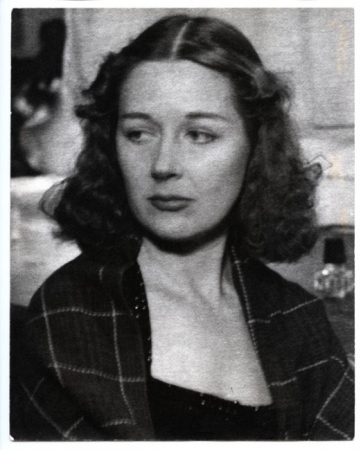Dorothea Tanning, 1910-2012

She made it to 101 years old; we are stunned. Gallerist NY tells us that Dorothea Tanning, surrealist painter and poet, has died. "According to her publisher, Graywolf Press, she passed away of natural causes while sleeping." Graywolf Senior Editor Jeffrey Shotts wrote today:
We are honored to have published her two poetry books, the first of which was published when she was 94 and the second of which was published just last fall when she turned 101. As she herself remarked, with her usual wry self-awareness, she was 'the oldest emerging poet.' The fact that she could have such an illustrious career as a visual artist and, so late in that career, then turn to poetry with such forceful craft and signature imagination is a triumph of her unparalleled vision and indomitable spirit. Working with her over two books has been one of the greatest delights of my career as an editor.
Gallerist NY on the evolution of Tanning's art career:
Ms. Tanning, active as an artist for some eight decades, is perhaps best known for the Surrealist paintings she produced in the 1940s and ’50s. Like Magritte, her work often took the form of realistic depictions of disturbing, surreal situations, as in 1943′s Eine Kleine Nachtmusik, in which two apparently entranced young women are confronted by a giant yellow sunflower.
In another iconic work, Birthday (1942), a topless woman in a dress sprouted with dark roots of some sort opens a door that looks out down a hall way filled with a long series of identical doors. A winged beast crouches on the ground beneath her. The work provided the title of her first memoir.
Ms. Tanning was born in 1910, in Galesburg, Ill. (“where nothing happens but the wallpaper,” she once quipped), and by age seven she had decided to become an artist. She studied briefly at the School of the Art Institute of Chicago but abandoned her studies after a matter of weeks, moving to New York in 1935 at the age of 22.
Inspired by the Museum of Modern Art’s Alfred Barr-curated “Fantastic Art, Dada, Surrealism” exhibition, she set sail for Paris in 1939, hoping to meet the Surrealists, who had by that point all left the country in the hope of avoiding the war. Returning to New York, she designed imagery for department stores and married Homer Shannon, a relationship that lasted six months.
In 1941, Ms. Tanning joined the Julien Levy gallery, a stronghold of Surrealism at the time, and she fell in with the group, meeting artists like Breton and Tanguy, whose ghostly color palette and amorphous shapes were an influence on some of her work of the time. She also met artist Max Ernst, then married to dealer Peggy Guggenheim, and the two fell in love, moving to Arizona together in the mid 1940s. The pair married in a joint ceremony with Man Ray and Juliet Browne, and moved to France in the 1950s, where they worked until 1976, when Ernst died.
As her career progressed, Ms. Tanning was commissioned to make sets and costumes for the ballets of George Balanchine and other performances and public venues. The Drawing Center presented a retrospective of this body of work in 2010, marking the centennial of her birth.
Later in her career, Ms. Tanning’s work became increasingly abstract, and she experimented with other mediums, like sculpture, printmaking and weaving. By the 1980s, she became increasingly focused on her writing, publishing numerous poems and two memoirs.
We pointed to MoMA's recent celebration of her life and work just recently; and even picked Tanning's Coming to That as one of the best poetry books of 2011. Read an excerpt from the book here. Ms. Tanning, you will be greatly missed. Photograph of Dorothea Tanning above by Man Ray, 1948.


